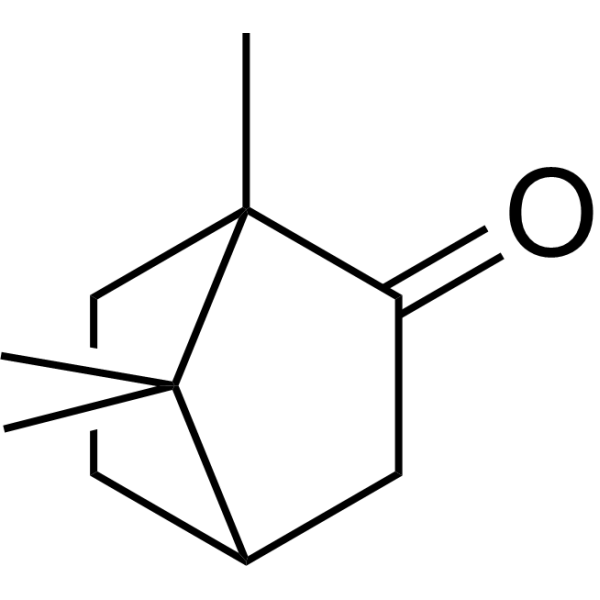Home
Products
(+/-)-Camphor



| Product Name | (+/-)-Camphor |
| Price: | Inquiry |
| Catalog No.: | CN09582 |
| CAS No.: | 76-22-2 |
| Molecular Formula: | C10H16O |
| Molecular Weight: | 152.2 g/mol |
| Purity: | >=98% |
| Type of Compound: | Monoterpenoids |
| Physical Desc.: | Oil |
| Source: | The herbs of mugwortArtemisia vulgaris L. |
| Solvent: | Chloroform, Dichloromethane, Ethyl Acetate, DMSO, Acetone, etc. |
| SMILES: | O=C1CC2C(C1(C)CC2)(C)C |
| Contact us | |
|---|---|
| First Name: | |
| Last Name: | |
| E-mail: | |
| Question: | |
| Description | Camphor ((±)-Camphor) is a topical anti-infective and anti-pruritic and internally as a stimulant and carminative. However, Camphor is poisonous when ingested. Antiviral, antitussive, and anticancer activities[1]. Camphor is a TRPV3 agonist[2]. |
| Target | TRPV3[2] |
| In Vitro | Camphor induces fibroblast proliferation through the PI3K/AKT and ERK signaling pathways. The MTT assay results show that 32.5, 65, 130, and 260 μM Camphor increase fibroblast viability to 108.9±6.6%, 118.6±2.8%, 127.7±4.2%, and 131.6±7.2%, respectively, compared to 0 μM Camphor treatment. Camphor treatment for 24 h increases the generation of ROS by up to 17.97% compared to 5.04% in the no-treatment control[3]. |
| Cell Assay | Primary dermal fibroblast (2×104 cells/mL) cells are plated in 96-well plates in 200μL of medium containing 10% FBS. After 24 h, the cells are treated with various concentrations of chamomile hydrosol or Camphor (0-260 μM). After treatment, 20 μL of MTT solution (5mg/mL) is added to each well, followed by incubation in a humidified environment for 3-4 h. The supernatant is removed and 150 μL of DMSO is added. Cell viability is determined from the absorbance at 570 nm, measured using a Sunrise microplate reader[3]. |
| Density | 1.0±0.1 g/cm3 |
| Boiling Point | 207.4±0.0 °C at 760 mmHg |
| Flash Point | 64.4±0.0 °C |
| Exact Mass | 152.120117 |
| PSA | 17.07000 |
| LogP | 2.13 |
| Vapour Pressure | 0.2±0.4 mmHg at 25°C |